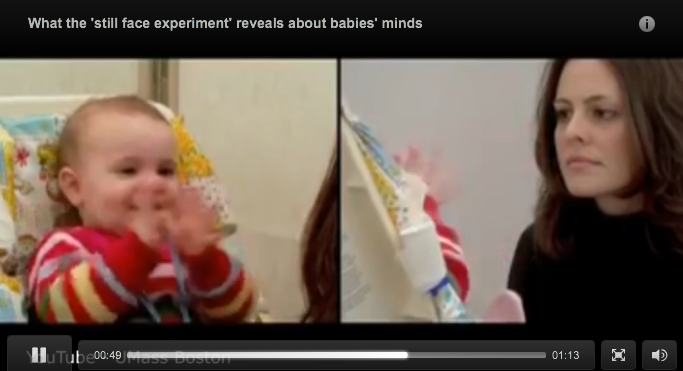|
|||||||||||||||
|

CLICK ON weeks 0 - 40 and follow along every 2 weeks of fetal development
|
||||||||||||||||||||||||||||
|
Babies have logical reasoning before age one According to a new study by psychologists at Emory University and Bucknell University, and published in the journal Developmental Science, research shows that babies can make inferences about social hierarchy and dominance. "We found that within the first year of life, infants can engage in this type of logical reasoning which was previously thought to be beyond their reach until the age of about four or five years," says Stella Lourenco, the Emory University psychologist who led the study. The researchers designed a non-verbal experiment using puppet characters. The experiment created scenarios among the puppets to test transitive inference, or the ability to deduce which character should dominate another character, even when the babies had not seen the two characters directly interact with one another. A majority of the babies in the experiment, who were ages 10 to 13 months, showed a consistent pattern of transitive inference.
During the 1960s, developmental psychologist Jean Piaget showed that children could solve transitive inference problems around the age of seven or eight. For example, if you know that Paul is taller than Mary, and that Mary is taller than Jack, then you can infer indirectly that Paul must be taller than Jack. You don't need to see Paul and Jack standing side-by-side to draw this conclusion. For years, the prevailing philosophy in cognitive psychology was that children younger than seven were mostly illogical and incapable of transitive inference - a form of intellectual reasoning by inferring outcomes based, with babies, on visual cues. Then, during the late 1970s, researchers found that by reducing the complexity of transitive inference problems, children as young as four could solve them.
For the current study, Lourenco teamed up with co-authors Robert Hampton, an Emory psychologist whose lab at Yerkes National Primate Research Center has demonstrated that monkeys can engage in transitive inference, and Regina Paxton Gazes, a former graduate student in the Hampton lab and post-doctoral fellow at Zoo Atlanta. Gazes, now on the psychology faculty at Bucknell University, designed the non-verbal experiments for the human infants. In the first video shown to the babies, the three puppets are arranged in a row. The elephant, bear and hippo, are similar in size but arranged in a left to right social hierarchy. The elephant is holding a toy, but the bear reaches over and forcibly takes the toy from the elephant. Next, the hippo takes the toy from the bear. This scenario suggests that the bear is more dominant than the elephant, and the hippo is more dominant than the bear. Finally, the babies were shown a scenario where the elephant takes the toy from the hippo. This scenario held the gaze of most babies in the experiment longer than the other scenarios.
In a second experiment, the researchers introduced a fourth character, a giraffe, that had not yet interacted with the others in the familiarization phase of the control video. The giraffe being new, had not displayed dominance behavior. The infants did not pay any attention to scenarios involving the giraffe, whether or not it displayed dominance. The data collected supported that the majority of the infants who were shown unexpected dominance behaviors, or 23 out of 32, were engaging in transitive inference when they gazed at scenarios of unexpected behavior by the puppets, compared to other scenarios. The researchers hypothesize that transitive inference for social dominance is evolutionarily important, so the mechanisms to support this type of logical reasoning come into place early. Gazes: "It's remarkable that the infants could make these inferences about social dominance with minimal presentation. It suggests an early emerging, and perhaps evolutionary ancient ability, that is shared with other animals."
Lourenco: "Since a majority of babies show the ability to engage in this kind of logical problem solving, our paradigm could certainly become an important tool for assessing normal cognitive development." Related article:Parents smile at their babies because it's fun and rewarding — but a remarkable experiment reveals how important it also is to the child's developing mind and wellbeing. Read more at http://coach.ninemsn.com.au/2015/10/26/13/57/still-face-experiment#yZjWz0Tv114O8e5l.99 — The dark experiment that proves why smiling at your baby is so important |
Nov 27, 2015 Fetal Timeline Maternal Timeline News News Archive
|
||||||||||||||||||||||||||||



